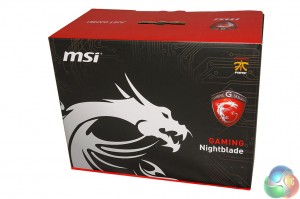
The MSI Nightblade ships in a large, heavy box with the name of the product underneath the company logo. The MSI Dragon takes up most of the real estate here.

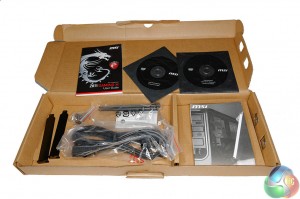
A smaller box inside contains the peripherals, cables, literature and discs.
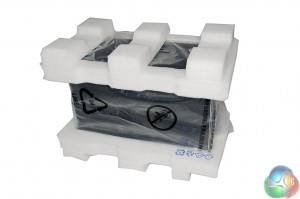
The chassis is well protected inside thick foam, and is covered with a clear plastic wrap for additional protection.
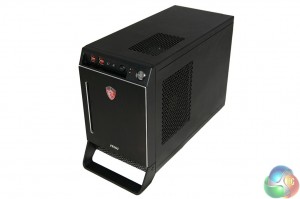
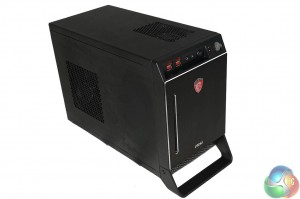
The case measures 345.8 mm x 227.3 mm x 175.7 mm and weighs 7.6kg in a barebones configuration. We wouldn't say the case is the most attractive. The ‘boxy' design does look slightly more old fashioned than the new models from Aerocool and BitFenix, however it is certainly well put together. The case is constructed from steel but MSI have coated it with Zinc to prevent rust and wear. The front of the case is ‘brushed metal' with diamond cut edges.
Our Nightblade review sample was ‘previously used in hot action' as there were masses of finger prints and dirty marks on all sides of the chassis. We did our best to try and clean these away for the pictures in the review.
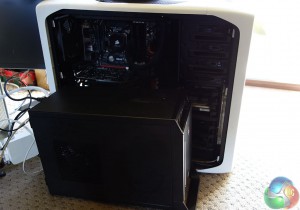
Just to give you an idea of the tiny size of the MSI Nightblade case, we positioned it next to the Corsair 600T chassis (above) used on one of our test systems. We use this specific system as our main graphics card testing rig.
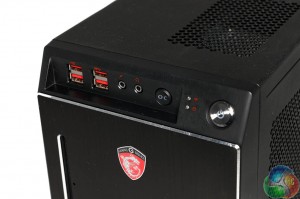
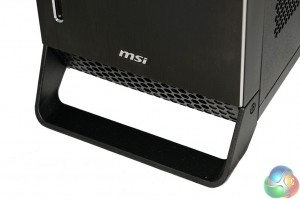
The I/O panel is along the front of the case, angled slightly to point upwards. There are 2x USB 2.0 ports here alongside 2x USB 3.0 ports for faster devices such as hard drives and flash drives. Alongside the USB ports is a microphone and headphone jack. Next to this is an OC Genie button for overclocking – this boosts the speed of the memory and CPU by 15%. Lastly we have two LED indicators and the power button.
The image above right shows an intake vent – just below the ‘MSI' brand name. this forces cool air in and across the components inside.
Along the bottom of the case is a LAN party handle for easy transportation of the case between locations. This handle actually raises the case from the floor or desk to improve airflow.
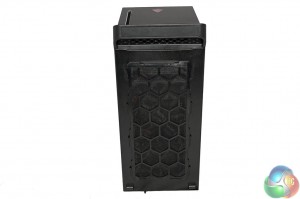
Underneath is a removable dust filter, covering almost the full length of the chassis from front to back.
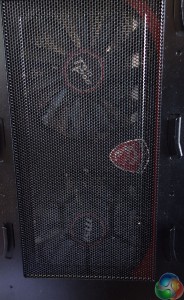
Above, with the fan filter removed we can see the MSI R9 290X graphics card, This is installed horizontally and sucks in cool air from outside the chassis. The LAN handle at the front lifts the case upwards, allowing a good intake of air for the graphics card.
 KitGuru KitGuru.net – Tech News | Hardware News | Hardware Reviews | IOS | Mobile | Gaming | Graphics Cards
KitGuru KitGuru.net – Tech News | Hardware News | Hardware Reviews | IOS | Mobile | Gaming | Graphics Cards


I think its quite attractive, although the handle at the front puts the whole shape out of sync or something.
They are taking quite a stance with the high end stuff inside, surprised it didnt just turn off under load 🙂
Yeah I love that, but I would want something a little more cost effective as a build, must be about £2k of hardware there in that. If the barebones is around £300, I would say £1k would get a great system. Something like a GTX770 and a 4670 would work for me.